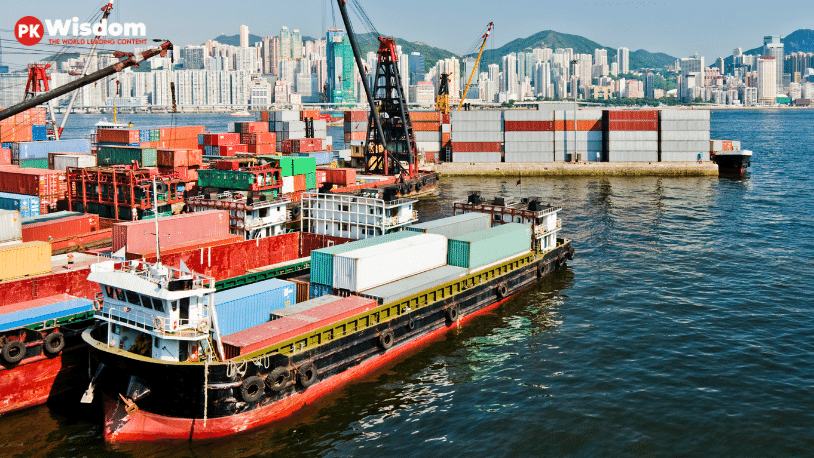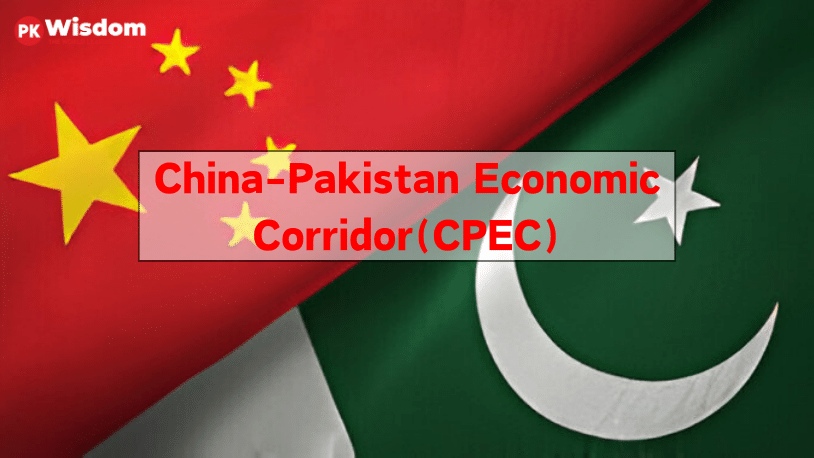The China-Pakistan Economic Corridor(CPEC) is a major project that has the possibility to alter Pakistan’s lucrative geography. The ambitious plan envisions an entire network of structure development along with energy systems, as well as special lucrative areas(SEZs) that extend through Gwadar Port on the Arabian Sea to Kashgar in the Chinese Xinjiang the Xinjiang fiefdom.
This article focuses on the way CPEC, when applied effectively, can serve as a catalyst to Pakistan’s economic growth. We’ll look at the important areas in which China-Pakistan Economic Corridor could have a major contribution and highlight the obstacles which must be tackled to ensure its successful operation.
Boosting Infrastructure: The Backbone of Growth
Pakistan’s infrastructure is a major blockade to economic growth. Lack of transportation infrastructure, inadequate energy generation, as well as inefficient logistic systems raise the costs of doing business and deter investment. CPEC will address these issues by investing massively in the development of infrastructure.
- Transportation: One of the main goals in CPEC is the creation of an ultramodern transportation network that connects Gwadar Port to Kashgar. This includes improvements to the existing roads, as well as the construction of new roads, railroads as well as islands. The advanced connectivity can not just decrease the costs of transport for Pakistani firms, but it will also establish Pakistan as a crucial trade route connecting China as well as Central Asia.
- Energy Security: Pakistan is a country that has suffered for ages from constant energy shortages which have slowed industrial development and affecting everyday life. China-Pakistan Economic Corridor is a program that invests in a variety of energy-related projects, including hydro, coal solar, wind and coal power plants. These projects aim to ease the energy shortages in Pakistan and provide an improved power supply and a more stable business environment.
- Logistics: CPEC is also a proponent of the improvement of the logistics infrastructure. This is a part of the development of modern warehouse infrastructure, dry ports and enhanced customs clearance procedures. The streamlining of logistics will drastically reduce the time and cost of transportation which will make Pakistani exports better competitive on the international market.
Unlocking Trade Potential: New Markets, New Opportunities
CPEC provides a unique chance for Pakistan to broaden its trade network and also attract foreign investment. Here’s how:
- Enhanced Connectivity: The new infrastructure network built by CPEC will drastically reduce trade barriers to China as well as Central Asia. This opens the door for Pakistani firms to tap into new markets that hold huge potential.
- Special Economic Zones: China-Pakistan Economic Corridor envisages the creation of SEZs which offer tax benefits along with streamlined regulations and world-class infrastructure in order to draw foreign investors. SEZs are able to be hubs for export-oriented manufacturing and manufacturing that create jobs as well as increase foreign reserves of foreign exchange.
- Regional Integration: CPEC promotes stronger economic connections with China as a major global economic power. This could lead to greater trade in technology transfer, as well as collaboration between Pakistani and Chinese firms.

Job Creation: Empowering the Workforce
One of the biggest benefits of CPEC is the large-scale creation of jobs. The energy infrastructure projects, infrastructure developments, as well as SEZs that are part of China-Pakistan Economic Corridor are expected to create millions of jobs both directly as well as indirectly in various sectors.
- Skilled Workforce Development: To make the most of the job creation potential of CPEC it is crucial to invest in building skilled workers. Training programs need to be created to provide Pakistani youngsters with the knowledge to succeed in the current economic environment.
- SME Growth: CPEC can pave the way for the development of medium and small-sized businesses (SMEs). A better infrastructure and a robust economy will open up new opportunities for SMEs encouraging the entrepreneur and creating jobs on a local scale.
Challenges and Considerations: Ensuring Sustainable Growth
Although CPEC has tremendous potential however, its success is contingent on energetically solving a variety of key issues:
- Security: Providing a safe space in the CPEC project across the vast Pakistani territories is essential. Secure measures that work will boost confidence in investors and warrant the project’s completion.
- Transparency and Accountability: Transparent procurement practices and accountable mechanisms are vital in order to assure you that China-Pakistan Economic Corridor rewards are dispersed equally and effectively.
- Debt Management: The massive investment in CPEC creates concerns regarding Pakistan’s debt burden. Prudent financial management and the highest return on investment is essential to limit the risks of borrowing.
- Environmental Sustainability: Environmental concerns should be taken into consideration throughout the process of CPEC’s creation. Sustainable infrastructure development and the adoption of green energy technologies are vital for protecting Pakistan’s natural ecosystem.
Social Development: Sharing the Benefits of Growth
In order for CPEC to complete its full potential, it’s essential that we warrant that the economic benefits are equally distributed all over Pakistani society. Here are some areas of concern:
- Education and Training: The investment on education programs and knowledge training programs are crucial to help prepare the Pakistani workforce for the new jobs that are created by China-Pakistan Economic Corridor. These include technical training programs that are geared towards the demands of new industries in addition to broader education initiatives that benefit develop the ability to think critically and develop problem-solving talent.
- Healthcare: Access to high-quality healthcare is essential for a productive and healthy workforce. CPEC can help in this by helping to develop healthcare infrastructure and encouraging health initiatives that are preventative.
- Poverty Reduction: Specific social programs could warrant that populations with low incomes benefit from the economic growth of CPEC. These could include initiatives focusing around microfinance and talent improvement for communities with low incomes, as well as social security nets.
- Gender Equality: Equalization of women is crucial for sustainable growth. CPEC can help encourage gender equality by providing the opportunities that women have to be part of within the workplace, take advantage of education programs and gain from economic expansion.
Read Also: Reviving Pakistan’s Economic Growth: A Roadmap for 2024-2028
Collaboration for Success: A Shared Responsibility
The achievement of CPEC requires a team effort from all stakeholder groups:
- Government: The Pakistani government plays an essential part in establishing a favorable environment to facilitate the development of China-Pakistan Economic Corridor. This includes ensuring stability in the policy while also promoting transparency and encouraging strong partnerships with China.
- Private Sector: The private sector can be an essential driver of economic growth. Pakistani firms must participate actively with China-Pakistan Economic Corridor projects, and leverage the opportunities for investment as well as joint ventures.
- Civil Society: Civil Society organisations have a vital role in monitoring the implementation of CPEC and ensuring social accountability and promoting inclusion of communities that are marginalized.
A Sustainable Future: Beyond Economic Growth
Although economic growth is an important goal, the success of CPEC must be evaluated through its impact on a larger perspective of sustainable growth. This could include:
- Environmental Protection: Environmental concerns should be considered at the forefront of the process of developing China-Pakistan Economic Corridor. Sustainable infrastructure practices and the adoption of green energy technologies are crucial to protect Pakistan’s natural resources.
- Community Development: CPEC plans should be planned in a way that will benefit local communities. This could include investing in the local infrastructure development as well as promoting local business and preserving the cultural heritage.
Conclusion
The CPEC project offers a unique chance to Pakistan to fulfil prosperity in the economy and social advancement. Through fostering a cooperative approach that focuses not just on financial benefits, but also social progress as well as environmental protection, China-Pakistan Economic Corridor could pave the way to a brighter future for all Pakistanis. This initiative depends on a shared vision, effective implementation and a determination to create a prosperous and environmentally sustainable society for Pakistan.


